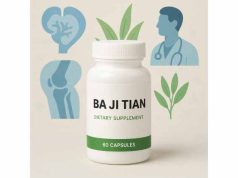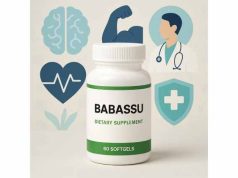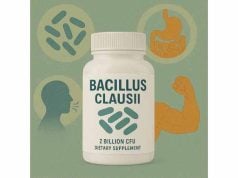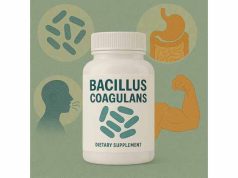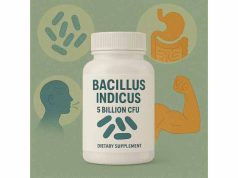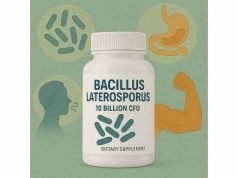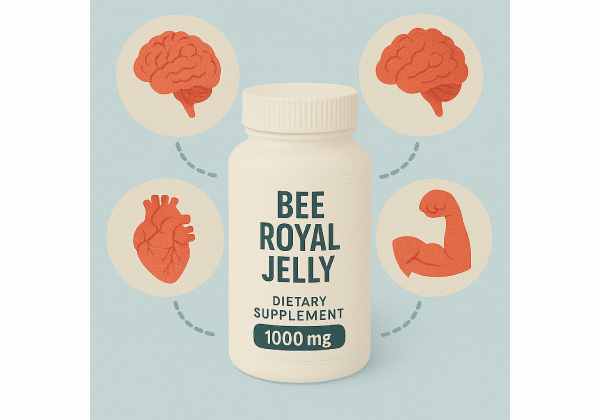
Have you ever wondered why queen bees live so much longer than worker bees? The secret may be royal jelly, a remarkable substance produced by honey bees to nourish their queen. Bee royal jelly is prized as a natural supplement for its potential to boost energy, support immune function, enhance skin health, and balance hormones. Packed with unique proteins, vitamins, and antioxidants, royal jelly is a true powerhouse for wellness seekers. In this guide, you’ll discover what bee royal jelly is, how it works in the body, its main evidence-backed benefits, tips for safe use and dosing, and answers to the most common questions. Let’s explore the fascinating world of royal jelly together.
Key Takeaways
- Bee royal jelly is a nutrient-rich secretion made by worker bees to feed queen bees and larvae, prized for its unique protein and antioxidant content.
- Research suggests royal jelly may support immunity, energy, skin health, hormonal balance, and overall vitality.
- Dosage and form matter—follow guidelines for safety and effectiveness.
- Individuals allergic to bee products, pregnant or breastfeeding women, and those on specific medications should consult a healthcare provider before use.
- High-quality, pure royal jelly supplements offer the best results for health and wellness.
Table of Contents
- What is Bee Royal Jelly? Understanding Its Nature and Purpose
- How Bee Royal Jelly Works in the Body: Bioactive Compounds and Biological Effects
- Royal Jelly Health Benefits: Research-Backed Uses for Energy, Immunity, Skin, and More
- Safety Precautions, Possible Side Effects, and Allergy Warnings for Royal Jelly
- Dosage Guidelines, Best Forms, How to Take Royal Jelly Effectively
- Bee Royal Jelly FAQ: Your Top Questions Answered
What is Bee Royal Jelly? Understanding Its Nature and Purpose
Bee royal jelly is a creamy, nutrient-packed secretion produced by nurse honey bees (Apis mellifera) within the hive. Unlike honey and pollen, which are gathered from flowers, royal jelly is synthesized by worker bees in their hypopharyngeal glands. Its primary purpose is to serve as the exclusive food for all developing bee larvae for their first few days—and for queen bee larvae throughout their entire lives.
This substance is responsible for transforming a regular larva into a fertile, long-living queen rather than a short-lived worker bee. The queen’s exceptional growth, reproductive ability, and longevity are attributed largely to her lifelong diet of royal jelly, which contains a rare blend of proteins, vitamins, minerals, fatty acids, and unique bioactive compounds not found in other bee products.
Composition of Royal Jelly
- Proteins: About 9-18% of royal jelly is protein, most notably Major Royal Jelly Proteins (MRJPs) which are believed to contribute to many of its health properties.
- Sugars: Roughly 7-18% of its makeup, providing natural energy.
- Lipids: Including 10-hydroxy-2-decenoic acid (10-HDA), a fatty acid unique to royal jelly with antimicrobial and immune-modulating activity.
- Vitamins and Minerals: Especially B vitamins (B5, B6), biotin, folic acid, trace minerals such as calcium, potassium, magnesium, zinc, and iron.
- Antioxidants: Flavonoids, polyphenols, and enzymes help protect cells from oxidative stress.
Natural Functions in the Hive
- Queen development: Royal jelly turns an ordinary larva into a fertile queen capable of living up to five years, compared to just weeks for worker bees.
- Colony survival: The hive’s ability to produce royal jelly is crucial to its survival and reproductive success.
How Royal Jelly is Harvested
Harvesting royal jelly is a meticulous process, involving the removal of jelly from special queen cells in the hive. Because of this, it is more precious and costly than honey or pollen. It is often sold fresh (refrigerated), freeze-dried into powder, or blended into tinctures, capsules, and creams.
Traditional and Modern Uses
- Traditional medicine: Used for centuries in Asia and Europe for boosting energy, fertility, and vitality.
- Modern supplements: Popular as a daily tonic, skin remedy, and ingredient in wellness formulations.
Royal jelly’s unique composition and biological function in the hive have inspired research into its potential for supporting human health in diverse ways.
How Bee Royal Jelly Works in the Body: Bioactive Compounds and Biological Effects
Royal jelly’s powerful effects on bee development and queen longevity have led scientists to explore its influence on human biology. While not all claims are fully proven, modern research highlights several bioactive compounds within royal jelly that may explain its diverse benefits.
Major Royal Jelly Proteins (MRJPs) and Their Functions
The most abundant proteins in royal jelly are MRJPs, especially MRJP1 (royalactin), which is believed to:
- Regulate cell growth and differentiation: Supporting tissue repair and renewal.
- Stimulate collagen production: Contributing to skin health and wound healing.
- Promote neural growth: Preliminary studies suggest a role in brain health and cognitive function.
Unique Fatty Acids—10-HDA and Its Effects
10-hydroxy-2-decenoic acid (10-HDA) is exclusive to royal jelly and offers:
- Antibacterial and antifungal activity: Helps protect the hive and may support human immune defenses.
- Anti-inflammatory effects: May ease symptoms of inflammation in the body.
- Immune system modulation: Supporting a balanced immune response.
Vitamins, Minerals, and Antioxidants
Royal jelly is a natural source of:
- B-complex vitamins: Including pantothenic acid (B5), vital for energy metabolism and stress resilience.
- Trace minerals: Such as calcium, magnesium, and zinc, supporting nerve function, immunity, and skin health.
- Antioxidants: Flavonoids and polyphenols protect cells from damage caused by oxidative stress and free radicals.
Potential Mechanisms in Human Health
- Energy metabolism: B vitamins and bioactive peptides enhance cellular energy production, helping to combat fatigue and support overall vitality.
- Hormonal balance: Some research suggests royal jelly may mimic estrogenic effects in the body, possibly easing symptoms of PMS or menopause for some individuals.
- Wound healing: Proteins and fatty acids in royal jelly promote tissue repair, making it a popular ingredient in skin creams for burns, cuts, and irritation.
- Immune support: Modulation of white blood cell activity may enhance the body’s natural defenses against illness.
Absorption and Bioavailability
Royal jelly is best absorbed when taken fresh or as a high-quality freeze-dried supplement. Some compounds, such as 10-HDA, are stable in powdered or encapsulated forms, but it’s important to purchase products that are carefully processed to preserve potency.
What Makes Royal Jelly Unique Compared to Other Bee Products?
- Distinct proteins and fatty acids (not found in honey, pollen, or propolis)
- Stronger hormonal and growth effects
- Higher antioxidant capacity
In summary, the biological effects of royal jelly stem from its rare proteins, unique fatty acids, vitamins, and antioxidants, each working together to support a range of wellness outcomes.
Royal Jelly Health Benefits: Research-Backed Uses for Energy, Immunity, Skin, and More
Bee royal jelly is valued around the world for its multi-dimensional health support. While ongoing studies continue to clarify its many actions, current evidence and traditional use highlight several key benefits:
1. Boosts Immune System Function
Royal jelly’s bioactive proteins and 10-HDA fatty acids can modulate immune response, making it popular for:
- Supporting resistance against seasonal illnesses and infections
- Enhancing recovery during times of stress or fatigue
- Helping balance overactive immune conditions
2. Supports Energy, Stamina, and Vitality
Rich in B vitamins and natural sugars, royal jelly is a favorite among those seeking to:
- Combat fatigue or burnout
- Improve mental and physical performance
- Promote resilience during periods of high stress
Many users describe a subtle, sustained increase in energy without the jitteriness associated with caffeine.
3. Enhances Skin Health and Wound Healing
Royal jelly’s combination of collagen-boosting proteins, vitamins, and antioxidants make it a sought-after ingredient in skincare:
- May speed up healing of wounds, cuts, burns, and sun damage
- Helps retain skin moisture and elasticity
- Can reduce the appearance of fine lines and redness
Topical creams with royal jelly are used for eczema, acne, and sensitive or aging skin.
4. May Aid Hormonal Balance
Some studies indicate royal jelly may have a mild estrogenic effect, possibly helping to:
- Alleviate premenstrual syndrome (PMS) symptoms
- Ease menopausal discomforts such as hot flashes or mood swings
- Support fertility and reproductive health (research ongoing)
5. Cognitive and Brain Health Support
Early research suggests that MRJPs in royal jelly may:
- Protect brain cells from oxidative damage
- Enhance memory and learning in aging populations
- Support overall cognitive function
6. Antioxidant Protection
Royal jelly delivers potent antioxidants to help neutralize free radicals, reducing oxidative stress and potentially lowering the risk of chronic disease.
7. Heart and Metabolic Wellness
Limited studies suggest royal jelly may:
- Lower LDL (“bad”) cholesterol and triglycerides
- Support healthy blood sugar metabolism
- Contribute to cardiovascular health
8. Potential Benefits for Men
Men sometimes use royal jelly for:
- Enhancing energy and libido
- Supporting prostate health
- Improving sperm quality and reproductive health
Summary Table: Main Benefits of Royal Jelly
| Benefit | How It Works | Who Might Benefit |
|---|---|---|
| Immune Support | Boosts defense against illness | Adults, elderly, stressed |
| Energy and Vitality | Enhances metabolism and stamina | Fatigued, busy individuals |
| Skin Health & Healing | Speeds tissue repair, boosts collagen | All ages, skin issues |
| Hormonal Balance | May modulate estrogen effects | Women (PMS, menopause) |
| Brain and Cognitive Function | Protects and nourishes nerve cells | Seniors, students |
| Heart & Metabolic Health | Supports cholesterol, blood sugar balance | At-risk adults |
It’s important to note: The strength of evidence for some benefits varies, and more robust human research is still needed.
Royal jelly is a versatile, evidence-based supplement that appeals to anyone interested in boosting immune health, energy, skin quality, and more.
Safety Precautions, Possible Side Effects, and Allergy Warnings for Royal Jelly
Bee royal jelly offers many potential health advantages, but it’s essential to understand its safety profile—especially if you’re new to bee-derived supplements or have allergies. While royal jelly is generally safe for most healthy adults when used appropriately, there are a few crucial safety and side effect considerations to keep in mind.
Who Should Exercise Caution?
Royal jelly is a natural substance, but some groups should approach it with special care:
- Individuals with allergies to bees, pollen, or honey: Royal jelly may trigger allergic reactions, ranging from mild rashes to severe anaphylaxis. If you have a known bee or pollen allergy, do not use royal jelly without medical supervision.
- Pregnant or breastfeeding women: While royal jelly has been traditionally used for reproductive health, robust clinical safety data in these populations is lacking. Always consult a healthcare provider before use.
- People with asthma or atopic conditions: Asthma sufferers and those prone to allergic reactions may have an increased risk of side effects.
- Children: Royal jelly is not recommended for young children due to the lack of safety data and the risk of allergies.
Common Side Effects
Most people tolerate royal jelly well when taken at recommended doses, but possible side effects include:
- Mild gastrointestinal symptoms: Such as stomach upset, diarrhea, nausea, or cramps, particularly at higher dosages or in sensitive individuals.
- Skin reactions: Itching, redness, or mild rashes can occur, especially with topical use.
- Allergic reactions: These can range from mild (hives, swelling) to life-threatening (anaphylaxis). Symptoms may appear within minutes to hours after exposure.
Rare but Serious Risks
Though very rare, severe allergic reactions are the most significant risk linked to royal jelly. Signs of a serious allergy include:
- Difficulty breathing or swallowing
- Swelling of the face, lips, tongue, or throat
- Severe dizziness, rapid heartbeat, or drop in blood pressure
If you experience any of these symptoms after taking royal jelly, seek emergency medical help immediately.
Medication Interactions
While royal jelly does not typically interact with most prescription medications, it may increase the effects of certain drugs or supplements, such as:
- Blood thinners (anticoagulants): There are isolated reports of increased bleeding risk when royal jelly is used alongside these medications.
- Immunosuppressive drugs: Since royal jelly may stimulate the immune system, consult your doctor if you are taking immunosuppressants or have an autoimmune condition.
Safe Use Tips
To minimize the risk of side effects:
- Start with a low dose and monitor your body’s response.
- Choose high-quality, pure royal jelly products from reputable brands.
- Avoid use if you have a history of severe allergic reactions to bee products.
- Consult your healthcare provider before starting, especially if you have underlying health issues, are pregnant, or are taking medications.
Special Considerations for Topical Use
Royal jelly creams and ointments are popular for skin care, but even topical application can provoke allergic reactions or irritation in sensitive individuals. Perform a patch test on a small area of skin before full use.
Signs You Should Stop Using Royal Jelly
Discontinue use and seek advice from a healthcare provider if you experience:
- Persistent stomach discomfort
- New or worsening rashes
- Respiratory symptoms
- Any sign of an allergic reaction
In summary, while royal jelly is considered safe for many, its allergy risk should not be underestimated. Always use with care, especially if you’re prone to allergies or have chronic health conditions.
Dosage Guidelines, Best Forms, How to Take Royal Jelly Effectively
Finding the right dosage and method of taking bee royal jelly is vital for safety and effectiveness. Dosage can vary depending on your health goals, the form of royal jelly, and your individual response. Here’s a practical guide to using royal jelly as a supplement.
Choosing the Right Form
Royal jelly is available in several forms, each with its advantages:
- Fresh (raw) royal jelly: Most potent, must be kept refrigerated. Offers a slightly tangy, bitter taste. Often taken by the spoonful or blended into smoothies.
- Freeze-dried powder: Long shelf life, stable potency, convenient for travel. Often encapsulated or in sachets.
- Capsules or softgels: Easiest to dose, neutral taste, and ideal for consistent daily use.
- Tinctures or extracts: Mixed with water or juice for quick absorption.
- Topical creams: Used for skin health and wound care.
General Dosage Guidelines
Standard oral doses for adults typically range from:
- Fresh royal jelly: 300–700 mg per day (¼–½ teaspoon)
- Freeze-dried royal jelly powder: 100–250 mg per day (dosage equivalent to raw, check label)
- Capsules: Follow product instructions; most deliver 150–500 mg of royal jelly extract per capsule
How to Take Royal Jelly
- On an empty stomach: Many users prefer to take royal jelly first thing in the morning or between meals for optimal absorption.
- With honey: Mixing with honey or juice can mask the strong flavor of raw royal jelly and add additional nutrients.
- Sublingual (under the tongue): Some believe holding royal jelly under the tongue for 1–2 minutes improves absorption of certain nutrients.
Dosage for Specific Uses
- General wellness and energy: 200–500 mg daily is usually sufficient for most adults.
- Immune support: 300–700 mg daily during times of illness or high stress.
- Skin health: Topical creams can be applied once or twice daily, or as directed by a dermatologist.
Note: Dosage recommendations can vary between brands and product types. Always read the manufacturer’s guidelines and consult a healthcare provider for personalized advice.
Can You Take Too Much Royal Jelly?
Royal jelly is well-tolerated in moderation, but higher intakes (above 1000 mg/day) may increase the risk of side effects, particularly in sensitive individuals. More is not always better—use the lowest effective dose for your needs.
Special Instructions for Topical Use
- Cleanse the skin before applying royal jelly creams.
- Patch test on a small area if you have sensitive skin or a history of allergies.
- Discontinue use if irritation or redness occurs.
Storage Tips
- Fresh royal jelly: Keep refrigerated and use within the recommended time frame.
- Powder and capsules: Store in a cool, dry place away from sunlight.
- Check expiration dates on all products to ensure potency and safety.
Who Should Not Use Royal Jelly?
- Individuals with bee or pollen allergies
- Pregnant or breastfeeding women (unless supervised by a healthcare provider)
- Children, unless recommended by a pediatrician
Quality Matters
Look for royal jelly supplements that are:
- Pure and free from fillers or artificial additives
- Sourced from reputable, ethical beekeepers
- Lab-tested for potency and purity
Taking the right dose of a quality royal jelly supplement can help you safely enjoy its wellness benefits.
Bee Royal Jelly FAQ: Your Top Questions Answered
What is bee royal jelly and how is it different from honey?
Royal jelly is a nutrient-rich secretion made by worker bees, used to feed queen bees and young larvae. Unlike honey, which is made from flower nectar, royal jelly contains unique proteins and fatty acids and is designed specifically for bee development.
What are the main health benefits of royal jelly?
Royal jelly is valued for supporting energy, immunity, skin health, and hormonal balance. It offers antioxidant protection, may help with wound healing, and supports overall vitality. Some people also use it for brain health and cardiovascular support.
Is royal jelly safe for everyone to take?
Most healthy adults can take royal jelly safely, but it may cause allergic reactions in people sensitive to bee products, pollen, or honey. It is not recommended for young children, pregnant or breastfeeding women, or those with severe allergies without medical supervision.
What is the recommended dosage for royal jelly supplements?
A typical dosage is 200–500 mg of freeze-dried royal jelly or 300–700 mg of fresh royal jelly per day. Always follow product instructions and consult your healthcare provider for personalized advice.
Can I use royal jelly topically for skin care?
Yes, royal jelly is often used in creams or ointments for skin hydration, wound healing, and anti-aging benefits. Always perform a patch test before full application to check for any irritation or allergic response.
Are there any medications or supplements that interact with royal jelly?
Royal jelly may increase the effects of blood thinners or immunosuppressive medications. If you’re taking prescription drugs, check with your doctor before adding royal jelly to your routine.
How do I choose a high-quality royal jelly supplement?
Look for products that are pure, free of fillers, ethically sourced, and lab-tested for potency and safety. Refrigerated or freeze-dried forms preserve nutrients best, and reputable brands will provide transparent labeling.
Disclaimer:
This article is for educational purposes only and does not constitute medical advice. Always consult your healthcare provider before starting any new supplement, especially if you have health conditions, allergies, are pregnant, breastfeeding, or take prescription medications. Individual responses to supplements can vary.
Enjoyed this guide? Share it with friends and family on Facebook, X (formerly Twitter), or your favorite platform! Follow us on social media for more wellness tips and updates. Your support helps us keep creating high-quality health content—thank you!

